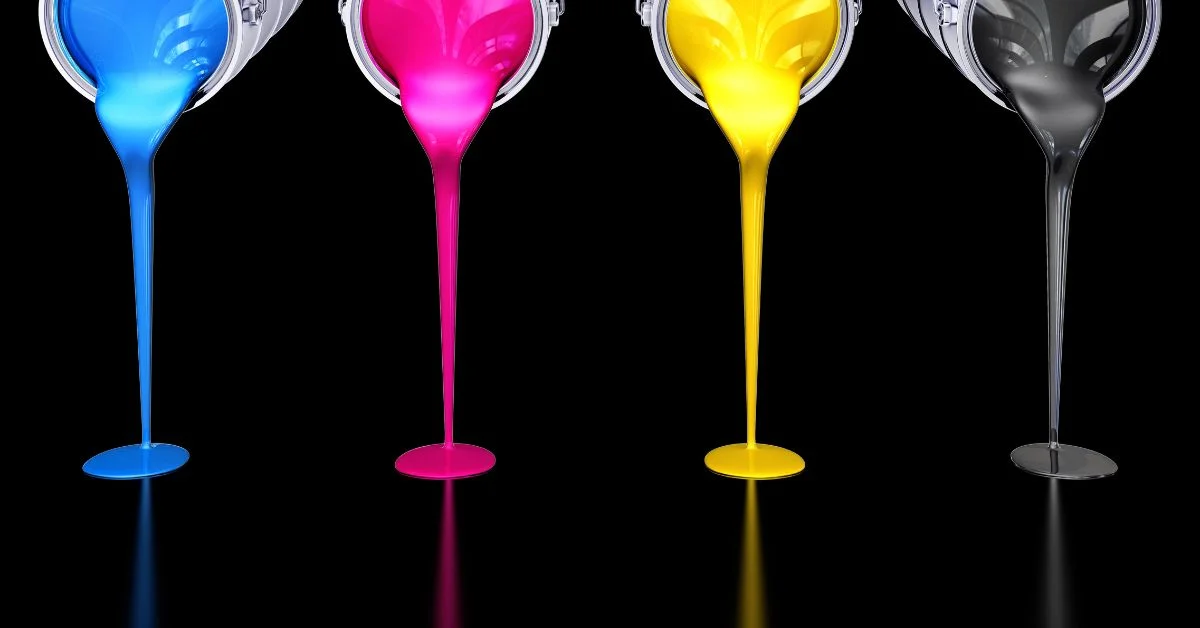For printers in the screen printing industry, accuracy and vibrancy in color reproduction are vital. Among the most powerful tools for achieving this is plastisol CMYK ink, a specialized set of inks designed for four-color process printing. This method allows the recreation of full-color images—such as photographs and gradients—on textiles with remarkable fidelity.
Whether you’re a professional screen printer or an enthusiast building your own setup, understanding plastisol CMYK ink is crucial to mastering the nuances of process color printing. In this in-depth guide, we’ll unpack what it is, how it works, its advantages, limitations, and best practices—all designed to bring clarity to one of the most technically challenging but rewarding areas of screen printing.
What Is Plastisol CMYK Ink?
Plastisol CMYK ink refers to a type of ink used in screen printing that combines the durability of plastisol with the precision of CMYK (Cyan, Magenta, Yellow, and Black) process printing. Unlike traditional spot color methods that use solid colors individually, CMYK printing overlaps four semi-transparent inks in tiny dots to produce a full spectrum of colors when viewed from a distance.
Core Characteristics:
- Plastisol base: Made from PVC particles suspended in a plasticizer, it doesn’t dry until cured.
- CMYK format: Involves process color separation for photo-realistic printing.
- Heat-cured: Requires curing at around 320°F (160°C) for permanence.
This technique is often used to reproduce digital images or photorealistic art on garments—particularly on white or light-colored fabrics where dot transparency is effective.
Why Use Plastisol for CMYK Instead of Water-Based Inks?
Plastisol inks are the industry standard in textile printing for good reason. When it comes to CMYK printing, plastisol offers several advantages over water-based or discharge inks:
1. Stability and Shelf Life
Plastisol inks do not dry out in the screen, which allows for longer print runs without the need for constant cleaning.
2. Sharp Dot Retention
In CMYK, maintaining halftone dot structure is critical. Plastisol’s thickness and stability make it ideal for preserving the integrity of fine dots.
3. Vibrant Results
Even though plastisol CMYK inks are more translucent, they produce richer colors on light garments and maintain consistent density during long runs.
4. Durability
Once cured properly, plastisol prints resist washing, cracking, and fading better than water-based alternatives.
The Science Behind CMYK: How Four Inks Make Millions of Colors
CMYK printing relies on halftone dots to simulate continuous tone imagery. Each ink is printed using screens that correspond to one of the four colors. These screens use different halftone angles (usually 22.5° for cyan, 45° for black, 75° for magenta, and 0° for yellow) to reduce moiré patterns.
When printed and viewed by the human eye, the tiny dots blend optically to create the illusion of full-color depth.
Process in Brief:
- Image separation: A full-color image is separated into its CMYK components using RIP software.
- Halftone generation: The image is converted into halftone dots, which vary in size and spacing to simulate tone.
- Screen burning: Each color separation is transferred onto its own screen with a precise mesh count (usually between 230–305).
- Layered printing: The inks are printed one after another, aligning perfectly to create the final image.
- Curing: The print is cured to fuse the plastisol to the fabric.
This layered printing technique mimics how traditional offset printing works, except that it’s done manually or semi-automatically on textiles.
Equipment and Setup Requirements
Printing CMYK with plastisol is more demanding than basic spot color printing. Here’s what a typical setup might include:
1. High-Quality Screens
- Mesh count: 230–305 is standard to hold fine halftone dots.
- Tension: High tension ensures better registration and cleaner prints.
- Emulsion: Should be capable of holding high-detail halftones.
2. Computer-to-Screen (CTS) System or RIP Software
- Necessary to generate accurate halftone separations.
- Popular software includes AccuRIP, Separation Studio, or Adobe Photoshop with proper plugins.
3. Precision Registration System
- Multi-color CMYK prints require near-perfect alignment.
- Use of micro-registration presses or pin registration helps prevent misalignment.
4. Drying and Curing System
- Conveyor dryers must be calibrated to ensure plastisol reaches its full cure temperature.
- Incomplete curing can lead to cracking or washing out.

Best Practices for Success with Plastisol CMYK Printing
Printing with plastisol CMYK ink requires more than just the right materials—it’s a craft that demands precision. Here are tested tips to improve print quality and reduce frustration:
1. Use White or Light Substrates
Because CMYK inks are semi-transparent, they don’t perform well on dark garments unless printed over a white underbase, which can complicate color blending.
2. Calibrate Your Monitor and RIP Software
What you see on your screen must accurately translate to printed halftones. Regular calibration is essential for consistent output.
3. Test Print Frequently
Before full runs, print a test on the actual fabric to assess dot gain, alignment, and color fidelity. Adjust press settings as needed.
4. Control Ink Deposit
Use hard squeegees and minimal pressure to maintain sharp dots and prevent colors from muddying.
5. Understand Dot Gain
When ink spreads slightly upon hitting the substrate, dot gain occurs. Compensate for this in your image separations or screen exposures.
Challenges of Plastisol CMYK Ink and How to Overcome Them
While plastisol CMYK offers remarkable advantages, it’s not without its hurdles:
1. Moire Patterns
Improper screen angle combinations or overlapping mesh patterns can create visual interference patterns. Use standard halftone angles and screen meshes to reduce risk.
2. Color Drift During Runs
Ink buildup, screen wear, or press movement can lead to inconsistent results. Routine cleaning and alignment checks mitigate this.
3. Overlapping Halftones
Ink overlapping can create unintended colors. Adjust dot placement and opacity during the separation process to avoid over-saturation.
4. Fibrillation
On garments like fleece or combed cotton, loose fibers can affect ink adhesion and appearance. Use a smooth garment base and consider a “smoothing screen” pass before the final color.
Comparing Plastisol CMYK to Other Print Methods
Versus Spot Color Plastisol
- Spot color is better for bold, flat colors and simple logos.
- CMYK plastisol excels in photo reproduction and full-color art.
Versus Water-Based CMYK
- Water-based inks have a softer feel but shorter shelf life.
- Plastisol provides more vibrant color on a broader range of substrates.
Versus Direct-to-Garment (DTG)**
- DTG is better for small runs with photorealistic needs.
- CMYK plastisol is more economical for long runs and allows for manual printing flexibility.
Environmental Considerations
Plastisol inks, being PVC-based, have raised concerns about environmental impact. However, many of these concerns are mitigated through responsible use and waste management:
- Use phthalate-free plastisols.
- Recycle excess ink when possible.
- Clean with eco-friendly solvents.
- Follow local regulations for disposal.
While not biodegradable like some water-based inks, plastisol’s long life on fabric reduces the need for reprints and thus waste.
Innovations in Plastisol CMYK Technology
In recent years, manufacturers have responded to industry demands with innovations in plastisol CMYK ink formulations:
- Low-cure plastisols: Cure at 270°F, reducing energy use and fabric damage.
- Soft-hand plastisols: Mimic water-based feel without sacrificing durability.
- Pre-mixed CMYK kits: Color-calibrated kits make separations easier for new users.
- Ink transparency control: Allows for tuning dot overlap and saturation more precisely.
These advances have made plastisol CMYK more accessible and sustainable than ever before.
Training and Education: The Learning Curve
Mastering plastisol CMYK printing is a process. Many printers benefit from workshops, online courses, and forums dedicated to screen printing. Manufacturers often offer tech support, webinars, and user manuals specifically for CMYK workflows.
Recommended Skills to Develop:
- Halftone theory and dot shape understanding
- RIP software proficiency
- Mesh and angle knowledge
- Color separation and proofing
- Registration alignment techniques
Becoming fluent in these skills doesn’t just improve results—it reduces waste and increases profitability.
The Business Case: Is Plastisol CMYK Worth It?
From a commercial standpoint, plastisol CMYK printing unlocks new service tiers:
- Full-color photo prints on garments for photographers, artists, and fashion brands.
- Tour merchandise with album covers and visual art.
- Promotional printing that requires detailed, multi-tone graphics.
Because plastisol CMYK uses just four inks, it can also reduce inventory and screen requirements for multi-color jobs compared to spot color, which might require 6–12 screens for a similar effect.
Conclusion: Plastisol CMYK Ink
Plastisol CMYK ink represents a blend of tradition and technical precision in screen printing. With roots in analog printing and relevance in digital workflows, it stands as one of the most powerful methods for achieving detailed, color-rich, and durable images on textiles.
Mastering it isn’t easy—but it’s worth it. For printers aiming to offer high-end visuals on apparel, plastisol CMYK is not just a tool; it’s a gateway to professional-level production. With the right preparation, calibration, and understanding, even complex photographic prints can become repeatable, consistent, and economically viable.
In a market where vibrant, full-color prints are in high demand, plastisol CMYK ink is a timeless solution—resilient, precise, and visually compelling.
FAQs: Plastisol CMYK Ink
1. What is plastisol CMYK ink used for?
Plastisol CMYK ink is used in screen printing to reproduce full-color images, like photographs, on fabric using four transparent inks.
2. Can I print CMYK on dark garments?
It’s possible, but usually requires a white underbase to maintain color accuracy since CMYK inks are transparent.
3. Is plastisol CMYK better than DTG?
For long runs, plastisol CMYK is more cost-effective and durable. DTG is better for one-offs or complex art on demand.
4. Do I need special software for CMYK separations?
Yes. RIP software like AccuRIP or Separation Studio is typically used to prepare halftone-separated files for screen printing.
5. Are plastisol CMYK inks eco-friendly?
They are not biodegradable but can be used responsibly with phthalate-free formulas and proper waste handling to minimize environmental impact.
For more information, click here.









